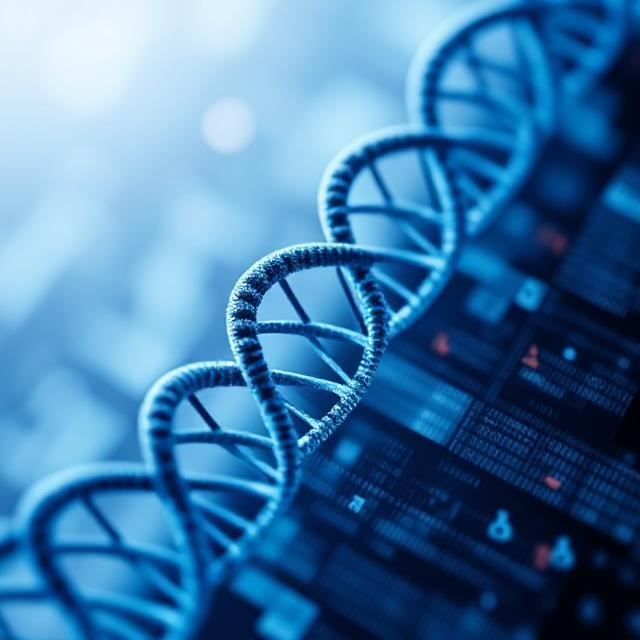
Advancements in sequencing technologies have redefined the boundaries of science—from forensic breakthroughs that breathe new life into cold cases to innovative approaches transforming cancer diagnostics and microbial research. In this exploration, we delve into the multifaceted world of sequencing, examining its impact on diverse fields and shedding light on the cutting-edge techniques that continue to drive discovery.
Forensic Sequencing: Piecing Together the Puzzle
Recent forensic investigations have leveraged sequencing not merely as a tool for identification but as a means to illuminate the deeper story behind unsolved cases. In one compelling instance, a DNA profile submitted to a national database was matched to a distant relative of an unidentified decedent. By employing advanced genome sequencing in tandem with forensic genealogy, investigators meticulously traced familial connections, revealing potential sibling relationships that could finally resolve a lingering mystery.
- Beyond Identification: Modern forensic sequencing now extends its reach into uncovering intricate family ties, broadening the scope of investigations.
- Genealogical Integration: The fusion of genetic data with family tree analyses represents a groundbreaking shift, enhancing the precision of identity matches and opening new investigative avenues.
- Balancing Act: As the technology advances, so do the ethical and privacy considerations, underscoring the need for robust legal frameworks to protect individual rights while supporting investigative progress.
Immune Cell Sequencing: A Paradigm Shift in Cancer Prognostics
In oncology, the focus is expanding from the tumor microenvironment to the systemic circulation. Traditional analyses of tumor-infiltrating lymphocytes are now complemented by innovative blood-based immune cell sequencing techniques. These approaches are not only providing deeper insights into patient prognosis but also challenging established biomarkers.
- Blood as a Window: Liquid biopsies that assess immune cell populations in the bloodstream offer a dynamic picture of the body’s response to cancer, often predicting patient survival more effectively than tumor analysis alone.
- Personalized Medicine: By mapping the immune landscape, researchers are paving the way for personalized treatment regimens that respond to an individual’s unique immunological profile.
- Broader Horizons: The implications extend beyond oncology, with similar methodologies being explored for autoimmune and infectious diseases, suggesting a universal role for immune cell sequencing in clinical diagnostics.
N-Terminal Sequencing: Unlocking Protein Function with Precision
While DNA often takes center stage, the sequencing of proteins remains a cornerstone of biochemical research. N-terminal sequencing, particularly through the well-established Edman degradation method, plays a pivotal role in deciphering the structure and function of proteins.
- Methodical Precision: Edman degradation meticulously identifies the amino acid sequence from the protein’s N-terminus, providing a clear window into its structure and potential function.
- Biopharmaceutical Impact: This technique is indispensable in verifying the quality of therapeutic proteins, ensuring that biopharmaceuticals are correctly produced and function as intended.
- Evolving Techniques: Although Edman degradation is renowned for its accuracy, emerging mass spectrometry methods are complementing and, in some cases, surpassing traditional approaches, offering faster, high-throughput alternatives for protein analysis.
Multiomics: A Holistic Approach to Genetic Insights

The transition from single-dimensional sequencing to multiomics represents a seismic shift in our understanding of health and disease. By integrating data from genomics, transcriptomics, proteomics, and metabolomics, scientists are unraveling the complex interplay between genetic variants and their phenotypic manifestations.
- Complex Disease Mapping: Diseases such as cancer and Alzheimer’s are now viewed through a multiomic lens, revealing how intricate networks of gene expression, protein interactions, and metabolic pathways contribute to disease progression.
- Data Integration: The challenge lies in synthesizing vast, multidimensional datasets. Advanced computational tools and machine learning algorithms are emerging as essential allies in this endeavor, converting raw data into actionable insights.
- Future Trajectories: As multiomics matures, it holds the promise of revolutionizing personalized medicine, offering a granular understanding of each patient’s unique molecular signature and informing tailored therapeutic strategies.
Bacterial Genomes and the Diversity-Generating Retroelement
Beyond human health, sequencing technologies are opening new frontiers in microbiology. The discovery of diversity-generating retroelements (DGRs) in bacterial genomes has revealed an astonishing mechanism of microbial adaptation. These elements enable bacteria to produce a staggering array of protein variants, a process akin to the hypermutation seen in the human immune system.
- Adaptive Mastery: DGRs allow bacteria to rapidly evolve and defend against bacteriophages, highlighting nature’s resourcefulness in the face of environmental challenges.
- Ecological Impact: Understanding how DGRs drive genetic diversity in microbial communities not only enriches our knowledge of bacterial survival strategies but also offers potential pathways for developing novel antimicrobial therapies.
- Innovative Inspirations: Insights gleaned from bacterial DGRs may well inspire new approaches in synthetic biology, where controlled mutagenesis could be harnessed for bioengineering applications.
A Glimpse Into the Future
The landscape of sequencing is in constant flux, driven by relentless innovation and interdisciplinary collaboration. As next-generation platforms continue to enhance speed, accuracy, and affordability, the scope of sequencing will only expand further, influencing areas as diverse as personalized healthcare, environmental monitoring, and forensic science.
By integrating traditional techniques with emerging technologies, researchers are charting new territories, transforming raw biological data into a coherent narrative of life’s complexity. Each discovery, whether it’s a new forensic link, a predictive immune marker, a protein sequence, or a bacterial survival mechanism, represents a step toward a more nuanced understanding of the biological world.
In embracing these advancements, the scientific community is not just sequencing genomes, proteins, or cells—it is decoding the intricate language of life itself, one breakthrough at a time.
